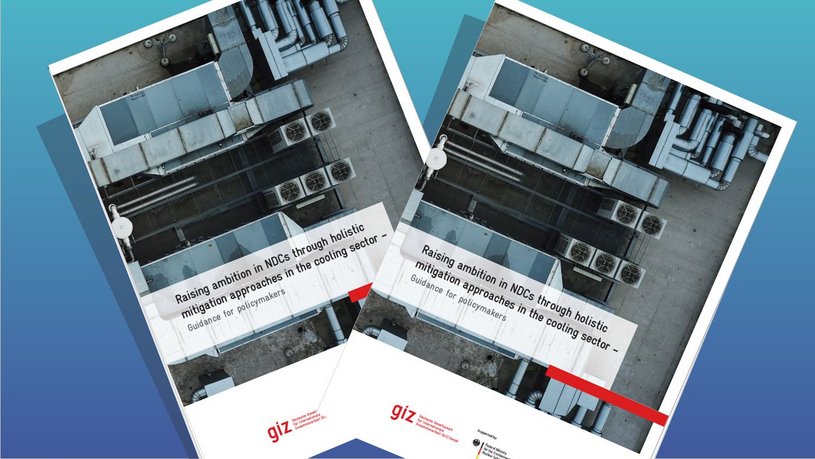Refrigeration and air conditioning (RAC) is vital for human well-being, for example, to prevent food loss and guarantee supply with medical care with functioning cold chains and alleviate heat stress through space cooling. Cooling sector specific mitigation targets and measures can significantly contribute to achieving a country’s overall climate targets and therefore, need to be considered when defining and updating Nationally Determined Contributions (NDCs).
The RAC sector is responsible for a considerable amount of global greenhouse gas (GHG) emissions – from refrigerant use (direct emissions) and the operation of the equipment with fossil-fuel based energy sources (indirect emissions). The consumption and production of most synthetic refrigerants, and more specifically hydrochlorofluorocarbons (HCFCs) and hydrofluorocarbons (HFCs), are controlled by the Montreal Protocol (MP) and its Kigali Amendment (KA). Nonetheless, recent studies reveal that the emission reductions resulting from a stringent phase-down of HFCs according to the KA schedule are not in line with the 1.5°C goal of the Paris Agreement (PA) under the United Nations Framework Convention on Climate Change (UNFCCC). Full compliance with the KA would translate into HFC emission reductions of 56% by 2050. But for a 1.5°Cconsistent pathway, a reduction of 70-80% would be required (Purohit et al., 2022). In addition, indirect emissions of the RAC sector caused by equipment electricity consumption are rising steadily. Thus, energy demand for space cooling is projected to triple by 2050, if no action is taken to address energy efficiency (IEA 2018). Consequently, it is crucial for countries to enhance their NDCs with Green Cooling solutions.
To date, more than half of the countries that developed an updated NDC have recognised the relevance of the cooling sector and included HFCs in the scope of gases covered. However, most NDCs lack concrete actions and implementation strategies for the RAC sector.
This guideline intends to provide political decision-makers with a step-by-step guidance on how to integrate and appropriately cover the cooling sector in a NDC. Moreover, it offers benchmarks for the degree of ambition of actions targeting direct and indirect emissions of the RAC sector.

